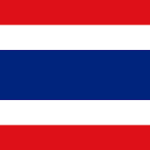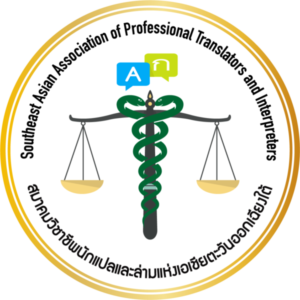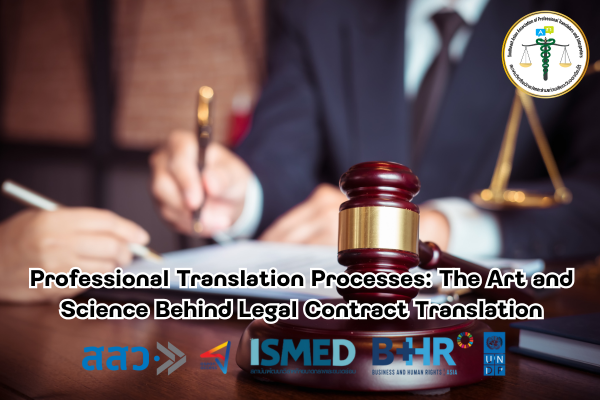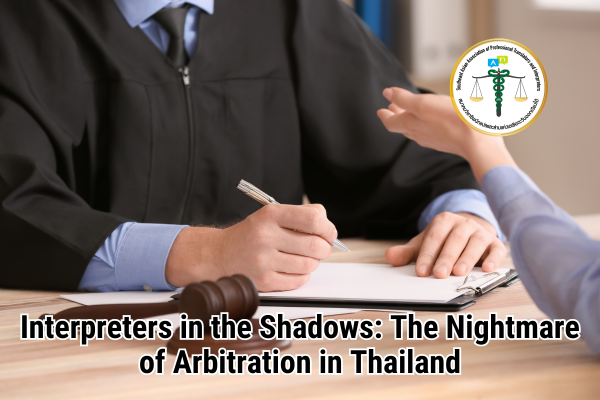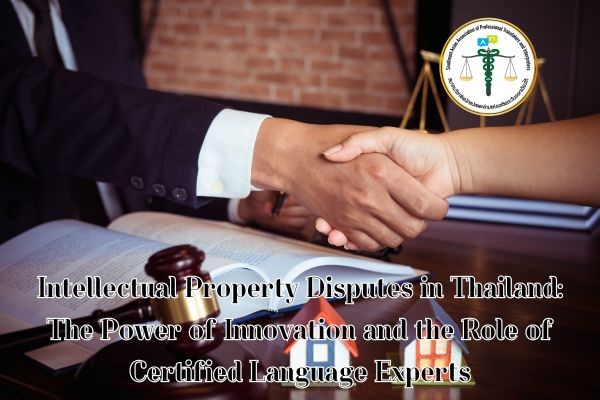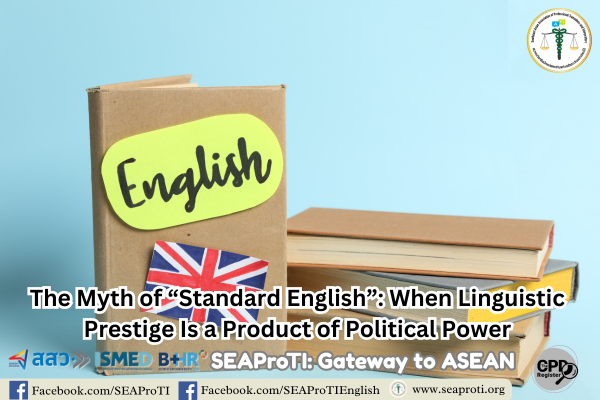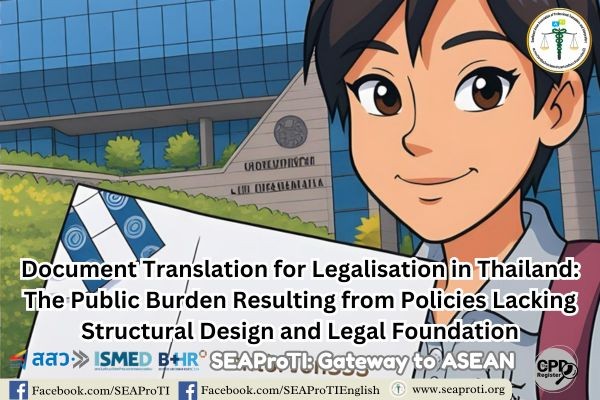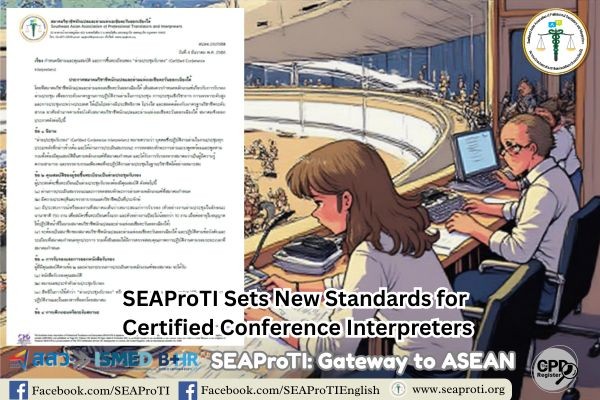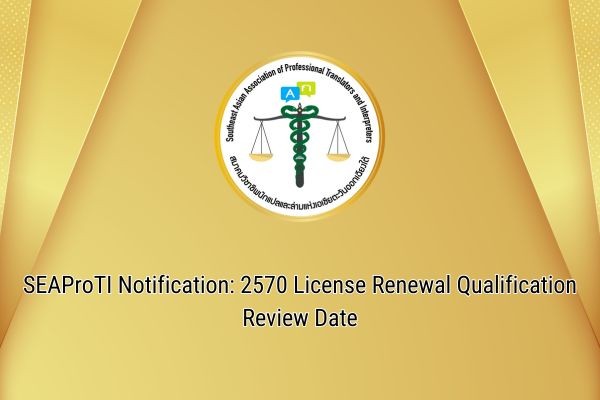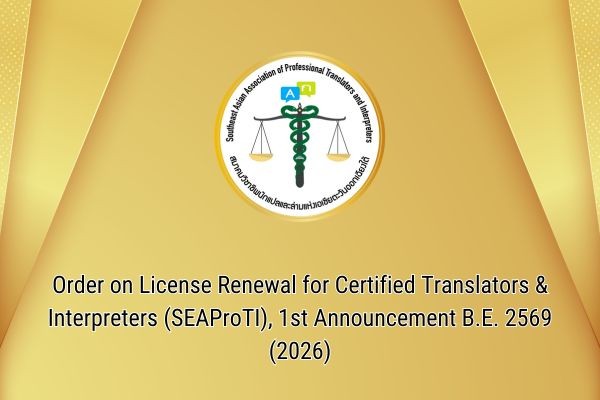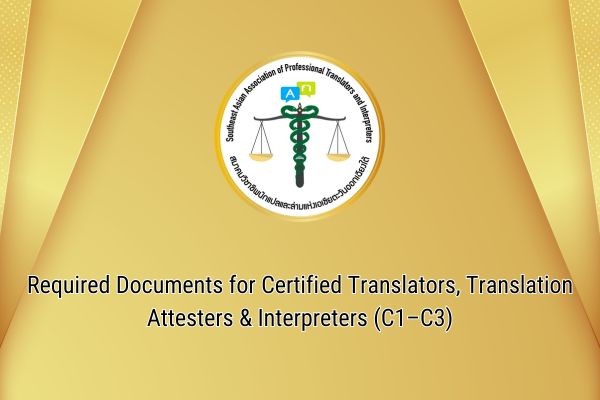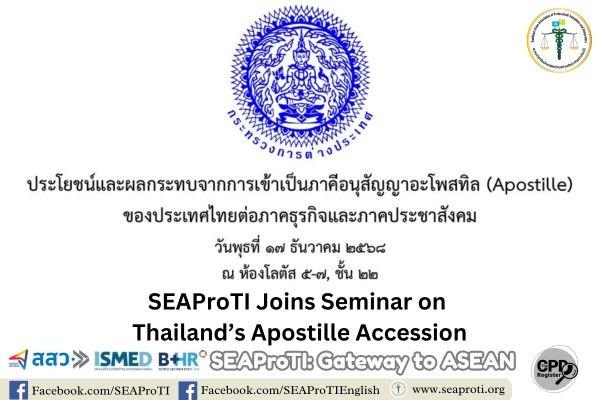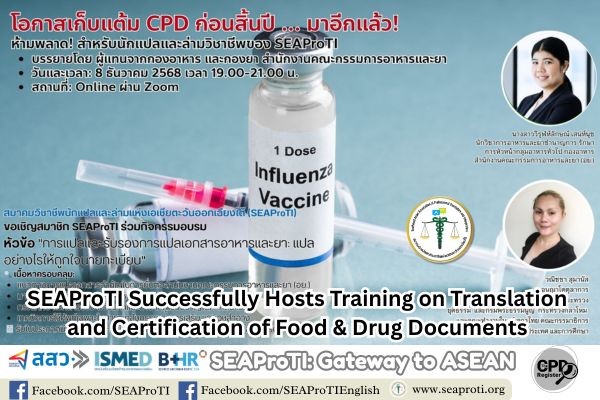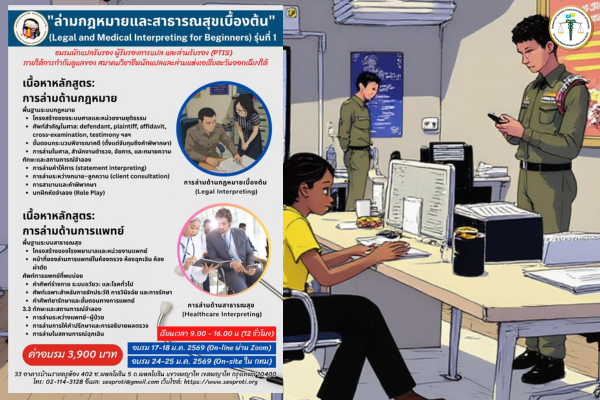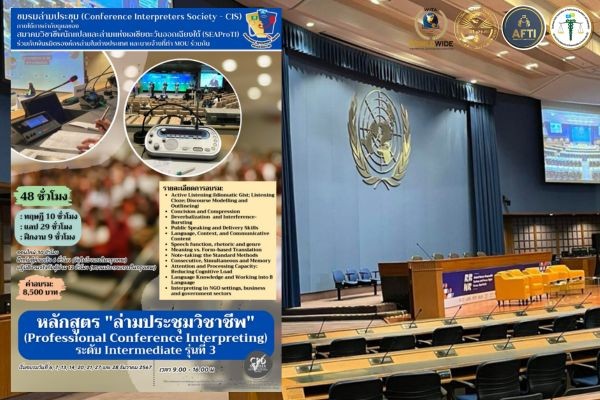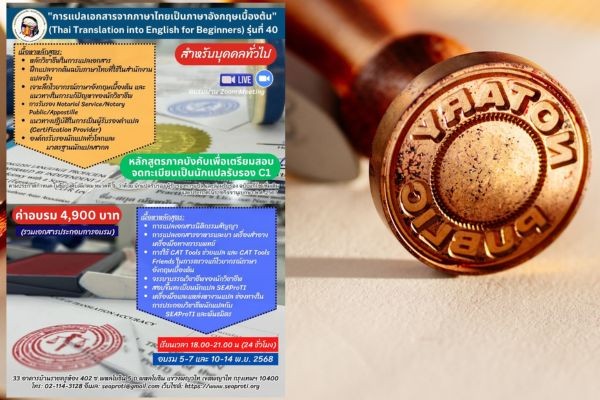Professional Translation Processes: The Art and Science Behind Legal Contract Translation
15 April 2025, Bangkok – In today’s globalized world, cross-border transactions have become commonplace, making legal contract translation a critical tool for safeguarding the interests of parties operating under different legal systems and cultural backgrounds. Translating legal documents—especially contracts—is not merely about converting words from one language into another. It requires precise legal reasoning, deep subject-matter knowledge, and mastery of target-language conventions to ensure that the intent of the original is preserved while remaining enforceable in a new legal context.
This article outlines the systematic workflow of a professional legal translator, highlighting both the “science”—legal expertise—and the “art”—linguistic nuance and stylistic precision—required to produce reliable, high-quality contract translations.
1. Understanding the Legal Context
Before translation begins, it is essential to understand the legal system under which the contract was drafted (e.g., Civil Law or Common Law) and the jurisdiction where it is intended to be enforced. This foundational understanding directly influences word choice, clause structure, and interpretative accuracy.
This step typically includes:
- Identifying the legal frameworks of both source and target jurisdictions
- Studying relevant laws such as labor law, IP law, or tax regulations
- Understanding the scope of dispute resolution mechanisms (e.g., courts or arbitration)
2. Terminology Preparation and Glossary Building
Legal contracts rely on consistent, precise terminology throughout. Building a custom glossary at the beginning of each project is essential to ensure consistency and clarity. Key legal terms such as “terminate,” “breach,” “governing law,” and “force majeure” often carry jurisdiction-specific meanings.
Professional translators often:
- Review past contracts or related legal documents
- Refer to legal dictionaries and international drafting guides
- Create client-specific terminology databases
3. Drafting the First Translation
This initial stage focuses on producing a working draft that prioritizes accuracy over stylistic polish. The translator works side-by-side with the source text, ensuring that each clause is fully represented in the target language.
Characteristics of the first draft:
- Formal and technical language is used
- Flow and tone are secondary to precision
- Unclear or ambiguous sections are highlighted for follow-up
4. Legal Editing and Language Refinement
With the first draft complete, the next step involves revising the text for clarity, consistency, and compliance with legal drafting conventions in the target language. This is where the “art” of translation comes into play.
Tasks in this stage include:
- Refining legal phrasing to reflect target-jurisdiction norms
- Smoothing sentence structure while preserving legal effect
- Benchmarking against sample contracts in similar industries
5. Review with Clients or Legal Advisors
Because contracts are legally binding instruments, professional translators often collaborate with:
- In-house counsel or external legal advisors
- The original contract drafters
- Legal professionals fluent in both source and target languages
At this stage, translators may provide:
- Explanations for terminology or phrase choices
- Legal reasoning to support the translation of complex clauses
- References to comparable legal standards in the target country
6. Final Review and Formatting
The final phase includes meticulous proofreading to confirm that:
- All content is complete and accurate
- Terminology is consistent throughout
- Layout and formatting mirror the source contract if required
Tools commonly used include:
- PerfectIt for consistency checks
- Legal grammar checkers and style guides
Conclusion
Translating legal contracts requires more than bilingual fluency—it demands legal literacy, sector-specific knowledge, and a rigorous, structured process. By integrating research, careful drafting, legal editing, and collaborative review, professional translators ensure that the translated contract is not only linguistically accurate but also legally reliable. In a world of increasingly complex international agreements, high-quality contract translation is not just a technical service—it is a cornerstone of legal certainty and cross-border trust.
SEAProTI’s certified translators, translation certification providers, and certified interpreters:
The Southeast Asian Association of Professional Translators and Interpreters (SEAProTI) has officially announced the criteria and qualifications for individuals to register as “Certified Translators,” “Translation Certification Providers,” and “Certified Interpreters” under the association’s regulations. These guidelines are detailed in Sections 9 and 10 of the Royal Thai Government Gazette, issued by the Secretariat of the Cabinet under the Office of the Prime Minister of the Kingdom of Thailand, dated July 25, 2024, Volume 141, Part 66 Ng, Page 100.
To read the full publication, visit: the Royal Thai Government Gazette
กระบวนการแปลอย่างมืออาชีพ: ศาสตร์และศิลป์เบื้องหลังการแปลสัญญากฎหมาย
15 เมษายน 2568, กรุงเทพมหานคร – ในโลกยุคโลกาภิวัตน์ การทำธุรกรรมระหว่างประเทศกลายเป็นเรื่องปกติ การแปลสัญญากฎหมายจึงมีบทบาทสำคัญในการเชื่อมโยงผลประโยชน์ระหว่างคู่สัญญาที่มีภูมิหลังทางกฎหมายและวัฒนธรรมที่แตกต่างกัน การแปลเอกสารทางกฎหมาย โดยเฉพาะ “สัญญา” ไม่ใช่เพียงการแปลความหมายของคำศัพท์ แต่ยังต้องคำนึงถึงเจตนารมณ์ทางกฎหมาย ความแม่นยำของถ้อยคำ และความสอดคล้องกับระบบกฎหมายของแต่ละประเทศ
บทความนี้นำเสนอขั้นตอนและกระบวนการทำงานของนักแปลสัญญากฎหมายอย่างมืออาชีพ โดยเน้นทั้งมิติของ “ศาสตร์” ได้แก่ ความรู้ทางกฎหมาย และ “ศิลป์” ได้แก่ ทักษะในการเลือกใช้ภาษาที่แม่นยำและเหมาะสมตามบริบท
1. การทำความเข้าใจบริบททางกฎหมาย
ก่อนเริ่มการแปลสัญญา นักแปลจำเป็นต้องเข้าใจว่าเอกสารฉบับนั้นอยู่ภายใต้ระบบกฎหมายใด (เช่น Civil Law หรือ Common Law) และมุ่งหมายให้ใช้บังคับในประเทศใด เพราะจะมีผลต่อการตีความถ้อยคำและโครงสร้างของสัญญา
การศึกษาบริบทประกอบด้วย:
- วิเคราะห์ระบบกฎหมายของทั้งสองประเทศ
- ทำความเข้าใจกฎหมายเฉพาะที่เกี่ยวข้อง เช่น กฎหมายแรงงาน กฎหมายทรัพย์สินทางปัญญา หรือกฎหมายภาษี
- ตรวจสอบขอบเขตอำนาจของศาลหรืออนุญาโตตุลาการที่ระบุในสัญญา
2. การเตรียมข้อมูลและสร้างฐานคำศัพท์เฉพาะทาง
การแปลสัญญาจำเป็นต้องใช้คำศัพท์กฎหมายที่แม่นยำและคงที่ตลอดทั้งฉบับ การสร้าง “glossary” หรือฐานคำศัพท์เฉพาะของแต่ละงานจึงเป็นขั้นตอนที่สำคัญ เช่น คำว่า “terminate”, “breach”, “governing law”, หรือ “force majeure” ซึ่งอาจมีคำแปลและการใช้แตกต่างกันไปตามบริบท
นักแปลควร:
- ศึกษาสัญญาต้นฉบับฉบับอื่น ๆ ที่เกี่ยวข้อง
- อ้างอิงพจนานุกรมกฎหมายหรือคู่มือมาตรฐานขององค์กรนานาชาติ
- จัดทำฐานคำศัพท์เฉพาะของลูกค้าแต่ละราย
3. การร่างฉบับแปลเบื้องต้น (Drafting Phase)
ในขั้นตอนนี้ นักแปลจะเริ่มร่างฉบับแปลโดยเน้น “ความเที่ยงตรง” (accuracy) มากกว่า “ความลื่นไหล” (fluency) โดยใช้ต้นฉบับภาษาต้นทางควบคู่กับการร่างภาษาเป้าหมายไปทีละข้อ
ลักษณะของร่างแรก:
- ใช้ภาษาทางกฎหมายที่เป็นทางการและรัดกุม
- ยังไม่แก้ไขโครงสร้างให้สละสลวย แต่เน้นการจับประเด็นทางกฎหมายให้ครบถ้วน
- ระบุส่วนที่ไม่ชัดเจนหรือควรถามลูกค้าไว้ในคอมเมนต์
4. การตรวจทานและปรับภาษาทางกฎหมาย (Legal Editing)
หลังจากร่างฉบับแปลแรกเสร็จสมบูรณ์ นักแปลจะทำการปรับปรุงให้ภาษามีความชัดเจน อ่านเข้าใจง่าย โดยยังคงรักษาเจตนารมณ์ของต้นฉบับ
ขั้นตอนนี้รวมถึง:
- การตรวจสอบการใช้ถ้อยคำทางกฎหมายให้ถูกต้องตามมาตรฐานของภาษาเป้าหมาย
- ปรับสำนวนและการจัดโครงสร้างข้อความให้สอดคล้องกับธรรมเนียมการเขียนสัญญาของประเทศปลายทาง
- เปรียบเทียบประโยคสำคัญกับสัญญามาตรฐานที่ใช้อยู่ในอุตสาหกรรมเดียวกัน
5. การสอบทานร่วมกับผู้ว่าจ้างหรือที่ปรึกษากฎหมาย
เนื่องจากสัญญาเป็นเอกสารที่มีผลผูกพันทางกฎหมายสูง การแปลจึงมักต้องผ่านการตรวจสอบโดย:
- ที่ปรึกษากฎหมายของลูกค้า
- ผู้ร่างสัญญาฝ่ายต้นทาง
- หรือในบางกรณี นักกฎหมายที่เข้าใจทั้งสองภาษา
นักแปลจึงต้องเตรียมข้อมูลเพิ่มเติมเพื่อประกอบการชี้แจง อาทิ:
- เหตุผลของการเลือกคำศัพท์บางคำ
- การตีความข้อสัญญาในบริบทเฉพาะ
- ตัวอย่างจากแนวปฏิบัติของกฎหมายประเทศปลายทาง
6. การตรวจสอบฉบับสุดท้ายและจัดรูปแบบ
ในขั้นตอนสุดท้าย นักแปลจะตรวจสอบความสมบูรณ์ของฉบับแปลอีกครั้ง ทั้งในด้าน:
- ความถูกต้องของเนื้อหา
- ความสอดคล้องของคำศัพท์ที่ใช้ทั้งฉบับ
- รูปแบบและการจัดวางเนื้อหาให้สอดคล้องกับฉบับต้นทาง
รวมถึงการใช้เครื่องมือช่วย เช่น:
- โปรแกรม PerfectIt เพื่อตรวจสอบความสม่ำเสมอ
- โปรแกรมตรวจสอบไวยากรณ์เฉพาะทางกฎหมาย
บทสรุป
การแปลสัญญากฎหมายเป็นกระบวนการที่ซับซ้อนและต้องอาศัยความรู้เฉพาะทางสูง นักแปลไม่เพียงต้องมีความสามารถด้านภาษาเท่านั้น แต่ยังต้องเข้าใจโครงสร้างและหลักการของกฎหมายในแต่ละระบบอย่างลึกซึ้ง การดำเนินงานอย่างมีขั้นตอน ตั้งแต่การวิเคราะห์บริบท การเตรียมข้อมูล ไปจนถึงการสอบทานร่วมกับผู้เชี่ยวชาญ ช่วยให้สัญญาที่แปลมีความแม่นยำ ชัดเจน และสามารถนำไปใช้ในทางกฎหมายได้อย่างแท้จริง
เกี่ยวกับนักแปลรับรอง ผู้รับรองการแปล และล่ามรับรองของสมาคมวิชาชีพนักแปลและล่ามแห่งเอเชียตะวันออกเฉียงใต้
สมาคมวิชาชีพนักแปลและล่ามแห่งเอเชียตะวันออกเฉียงใต้ (SEAProTI) ได้ประกาศหลักเกณฑ์และคุณสมบัติผู้ที่ขึ้นทะเบียนเป็น “นักแปลรับรอง (Certified Translators) และผู้รับรองการแปล (Translation Certification Providers) และล่ามรับรอง (Certified Interpreters)” ของสมาคม หมวดที่ 9 และหมวดที่ 10 ในราชกิจจานุเบกษา ของสำนักเลขาธิการคณะรัฐมนตรี ในสำนักนายกรัฐมนตรี แห่งราชอาณาจักรไทย ลงวันที่ 25 ก.ค. 2567 เล่มที่ 141 ตอนที่ 66 ง หน้า 100 อ่านฉบับเต็มได้ที่: นักแปลรับรอง ผู้รับรองการแปล และล่ามรับรอง
